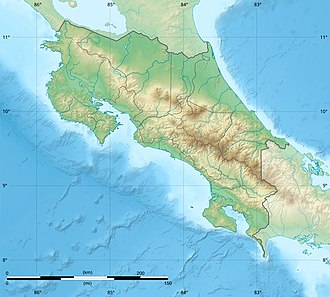| Los Quetzales National Park | |
|---|---|
 Visitor entrance to Los Quetzales National Park. | |
 Los Quetzales National Park area. | |
| Location | Costa Rica |
| Nearest city | San Isidro de El General, Costa Rica |
| Coordinates | 9°35′10″N83°54′26″W / 9.58611°N 83.90722°W |
| Area | 50.00 square kilometres (19.31 sq mi) |
| Established | 2006 |
| Governing body | National System of Conservation Areas (SINAC) |
Location in Costa Rica | |
| Official name | Turberas de Talamanca |
| Designated | 2 February 2003 |
| Reference no. | 1286 [1] |
Los Quetzales National Park (Spanish : Parque Nacional Los Quetzales), located 97 kilometers from San Isidro de El General, in Costa Rica, was created in 2006 by decree 32981-MINAE. [2] [3] It is managed under the Central Conservation Area of the National System of Conservation Areas.
Contents
Stretching across 50.00 square kilometres (19.31 sq mi), the national park has limited facilities including a small ranger station and a single, highly mountainous main road.
The national park is surrounded by the Los Santos Forest Reserve on its north, west and south sides, and by the Tapantí National Park on its northeast side. The park was created by allocating the area from Los Santos Forest Reserve.
